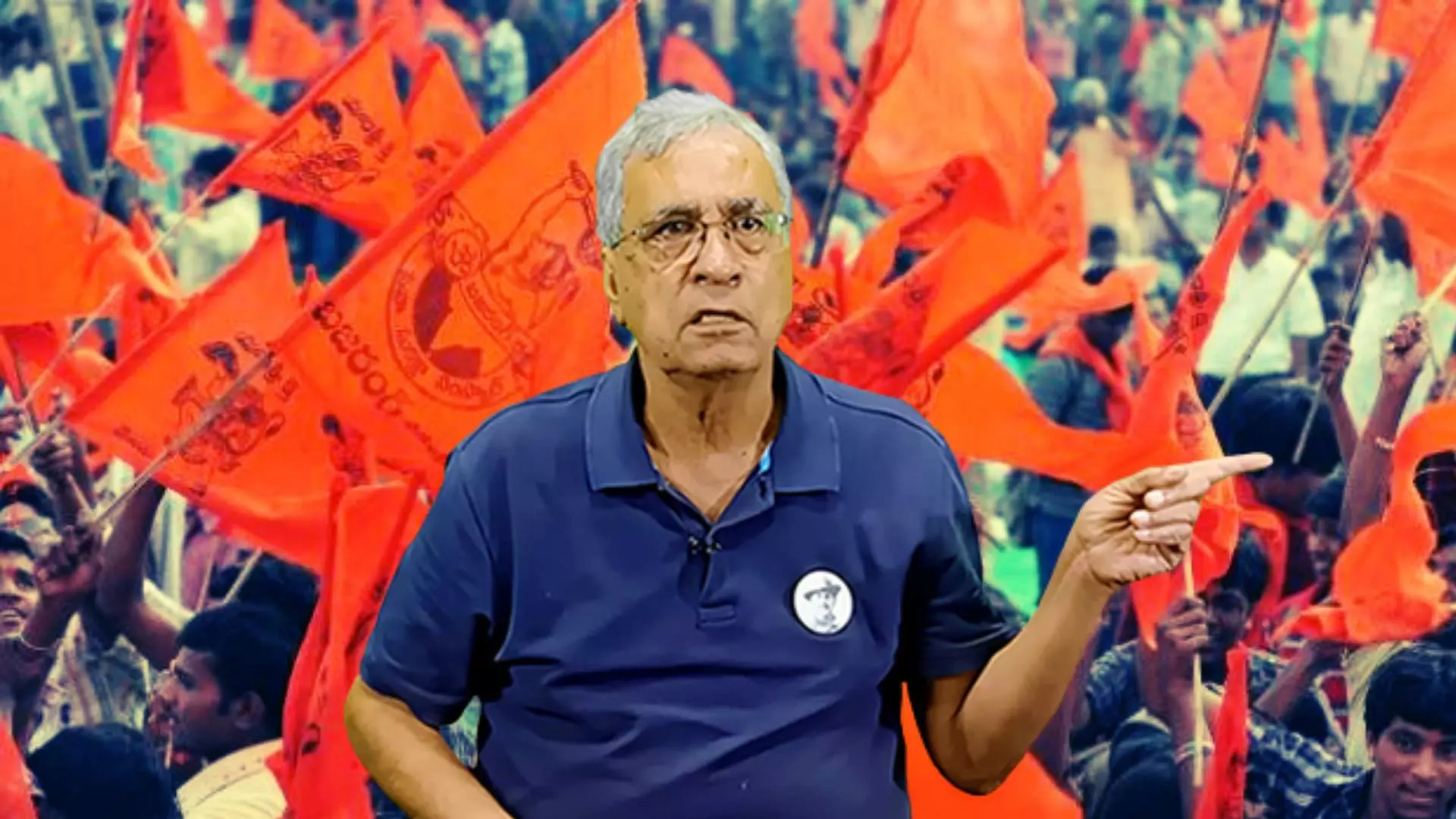
RSS at 100: How Hindu nationalism drew from Mussolini’s fascist model
Prof Shamsul Islam explains how early Hindu nationalist leaders like BS Moonje and KB Hedgewar were inspired by European fascism

As the Rashtriya Swayamsevak Sangh (RSS) marks its 100th year, The Federal speaks with Professor Shamsul Islam, academic and author of 'RSS, School of Fascism'. He traces the ideological and organisational roots of the Sangh to 1930s Europe, where fascist movements were transforming politics through militarisation, propaganda, and cultural dominance.
How did fascist ideas influence the early RSS leadership?
The RSS’s formation in the 1920s and 30s coincided with the rise of fascism in Europe. Hindu Mahasabha leader BS Moonje, who was the mentor of RSS founder KB Hedgewar, openly admired Mussolini’s Italy. Moonje believed that Hindu society needed to be militarised to assert dominance.
His 1931 visit to Italy proved crucial. He met Mussolini, toured fascist youth and military institutions like the Balilla and the Avanguardisti, and returned convinced that similar organisations were needed in India to build a disciplined, militant Hindu society.
How did Moonje’s ideas shape the RSS?
After returning from Italy, Moonje helped establish the Bhonsala Military School in Nashik, designed to train Hindu boys both ideologically and militarily. Hedgewar was deeply influenced by these ideas and modelled the RSS on similar principles — daily drills, uniforms, discipline, and a strict hierarchy.
The objective was to combine physical training with ideological indoctrination — creating not just disciplined citizens but loyal soldiers of a Hindu nation. This militarised vision became central to the RSS’s identity.
Was this influence confined to India, or were there international connections?
There were definite international links. Italian consulates in colonial India, especially in Calcutta and Bombay, actively promoted fascist propaganda. They financed local publications sympathetic to Mussolini’s regime and cultivated connections among Indian intellectuals.
Moonje’s visit was welcomed by Italian officials who viewed Hindu nationalists as potential allies against the British. Though there was no direct funding of the RSS, the ideological and moral influence was strong.
Why did the RSS stay away from the freedom struggle?
The RSS viewed Mahatma Gandhi’s inclusive nationalism as a threat to its sectarian vision. Its leaders believed the real battle was not against British rule but against what they saw as internal enemies — Muslims and Christians.
Instead of joining the national movement, the RSS focused on building a disciplined Hindu cadre that could shape India’s future politics. Hedgewar and his successor MS Golwalkar both believed in cultural, not political, revolution — the idea that changing the mindset of Hindus was more important than fighting colonial power.
How did the RSS’s ideology evolve after independence?
After Gandhi’s assassination, the RSS was briefly banned but soon re-emerged with a softer image, presenting itself as a cultural organisation. However, its core ideology — the dream of a Hindu Rashtra and a uniform Hindu identity — remained intact.
The organisation diversified into education, labour, and religious fronts, creating a vast network that continues to influence Indian politics. The language may have changed, but the foundational belief in a majoritarian, militarised society persists.
What, in your view, defines the RSS at 100?
The RSS represents a century-long project to reshape Indian nationalism through exclusionary means. It has succeeded in normalising ideas that once belonged to the fringe — ideas rooted in European fascist thought.
Understanding its origins is vital because the same methods — mass mobilisation, control of cultural institutions, and portrayal of minorities as threats — continue to shape India’s political landscape today.
The historical journey of the RSS — from Moonje’s meeting with Mussolini to its present-day political influence — reflects how European fascist methods were adapted to Indian conditions, creating one of the most powerful ideological movements in modern Indian history.
(The content above has been transcribed from video using a fine-tuned AI model. To ensure accuracy, quality, and editorial integrity, we employ a Human-In-The-Loop (HITL) process. While AI assists in the initial draft, our editorial team thoroughly reviews, edits, and refines the material before publication. At The Federal, we combine AI efficiency with human expertise to deliver credible, nuanced journalism.)

